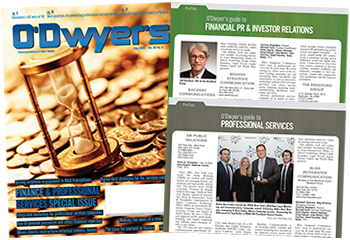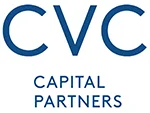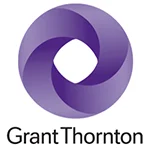|
|
Decades ago, it was a major coup to place your client’s story in the physical, hard copy issue of a major national magazine such as Newsweek or U.S. News and World Report. These days, some of these magazines no longer exist except for online.
Meanwhile, the virtual world has greatly expanded with the launch of hundreds of new news sites in a variety of industries. For example, while Wired and Computerworld were once the center of the universe for technology stories, today’s PR practitioner has a multitude of choices when it comes to placing a tech story. TechCrunch, The Verge, ReCode, CNET and Gizmodo are just a few candidates in a space flooded with them.
While some business/financial clients might still long for a front-page New York Times story, most will likely ask for a healthy array of placement in a variety of online media (including industry trade publications and major business news outlets such as Bloomberg) and some print media including the Wall Street Journal.
|
|
Many PR practitioners look at the plethora of growing news outlets as a positive sign that media opportunities for clients are expanding and that, therefore, their industry is doing well. But with this expansion comes increased expectations and responsibility for scoring ink in a financial and technology media world no longer limited to Dow Jones and the Financial Times.
In addition, many iPhone apps even have blogs that cover every business subject under the sun, thereby offering even more publicity avenues.
But it’s critical to read, study and analyze all of these new sites and blogs to choose your vehicle carefully. Take a good hard look at your clients’ content to find the media that is the best fit for it. For instance, if you represent a company in the cryptocurrency business, determine if your current press release features an announcement that would warrant attention in a top-tier, general business news site such as the Wall Street Journal (such as the announcement of a million-dollar-deal) or whether it contains detailed information specific to the Bitcoins of the world (i.e., a new cryptocurrency exchange has been hacked and the owners are on the lookout for the culprit).
The media itself — as well as global industry in general — has grown exponentially since the late 20th century, so the roles of both the journalist and the PR professional are vastly different from the old models. Most business/financial journalists now specialize in one particular area and there are fewer generalists than in the past.
This doesn’t mean they don’t possess a broad overview of the financial world, though, because news desks and crews are often kept small to remain profitable, so news people need to be well informed. But, nevertheless, a PR executive must do more homework than he or she once did to get the right match for each client’s story.
Taking again the cryptocurrency example, PR practitioners must make sure they have a decent understanding of the crypto business landscape and be able to talk about it intelligently with a reporter.
There’s no need to go back to school to take cryptocurrency classes, but the effective media relations executive will read relevant news daily and ensure that he or she is on top of all the frequent developments in this rapidly evolving industry.
In addition to their newsworthy developments, also be sure to take advantage of your client’s expertise in the field. Determine which media covering Bitcoin accept bylined articles and encourage your client to write a piece on where they think the industry will be in five years or what are the challenges they and their competitors are currently facing.
Also, be acutely aware that because there are more media choices than ever before, some of your clients may think that they should expect more than their appropriate share of publicity. It is important to counsel them accordingly and make them understand that an increased amount of media doesn’t automatically make their company more newsworthy. It simply means that media are more particular than they used to be and that each publication or TV show now has a particular part of the business world that they are mandated to cover actively and effectively.
The new state of digital media could be a win/win for media relations executives who carefully plan and consider all their options for comprehensive but targeted media campaigns.
***
Frank Tortorici leads Marketing Maven’s business, financial and crypto media relations out their NY office. He can be reached at [email protected].




 Teneo is handling the initial public offering of CVC Capital Partners, one of Europe’s largest private equity firms with nearly $200B in assets under management.
Teneo is handling the initial public offering of CVC Capital Partners, one of Europe’s largest private equity firms with nearly $200B in assets under management. Brunswick Group represents Endeavor Group Holdings as it agrees to go private via its acquisition by Silver Lake technology investment firm, which is handled by Edelman Smithfield.
Brunswick Group represents Endeavor Group Holdings as it agrees to go private via its acquisition by Silver Lake technology investment firm, which is handled by Edelman Smithfield. Tod Donhauser, a nine-year veteran of Edelman, has joined H/Advisors Abernathy as managing director and head of its San Francisco office.
Tod Donhauser, a nine-year veteran of Edelman, has joined H/Advisors Abernathy as managing director and head of its San Francisco office. Intelligent Group Ltd, a Hong Kong-based financial PR firm, has priced its initial public offering of 1.9M shares at $4, which is the low end of the $4 to $5 range.
Intelligent Group Ltd, a Hong Kong-based financial PR firm, has priced its initial public offering of 1.9M shares at $4, which is the low end of the $4 to $5 range. Kekst CNC represents Grant Thornton as it sells a majority stake in its US arm to New Mountain Capital, which relies on Goldin Solutions, in what is billed as the largest PE investment in the accounting and advisory sector.
Kekst CNC represents Grant Thornton as it sells a majority stake in its US arm to New Mountain Capital, which relies on Goldin Solutions, in what is billed as the largest PE investment in the accounting and advisory sector.


 Have a comment? Send it to
Have a comment? Send it to 
No comments have been submitted for this story yet.